- Home
- Crazy Quilting
Discover Crazy Quilting: From Fabric Scraps to Story-Filled Quilts
Join me on a journey into the world of crazy quilting, where creativity knows no bounds and every stitch tells a story.
This beloved needlecraft has fascinated quilters for generations, inviting them to break free from traditional rules and release their unique artistic vision.
With its rich historical roots and endless possibilities for experimentation, crazy quilting continues to adapt to modern tastes and techniques, remaining a cherished form of self-expression.
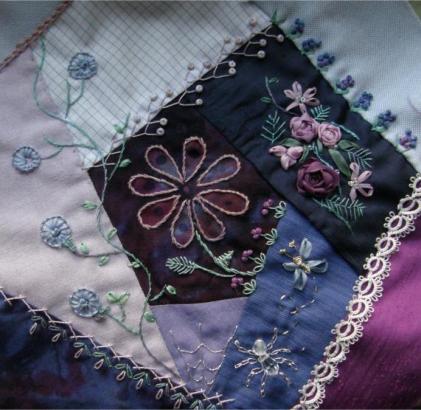
Historical Roots and Inspirations
The origins of crazy quilting can be traced back to the 1876 Philadelphia Centennial Expo, where the Japanese Pavilion sparked a quilting revolution.
The daring, asymmetrical designs and cracked glaze ceramics on display sent shockwaves through the quilting community, inspiring a newfound appreciation for unconventional shapes, sizes, and textures.
Quilters began incorporating intricate patterns, exotic motifs, and elaborate stitches into their designs, developing a keen interest in all things Oriental.
This style, which became known as crazy quilting, quickly gained popularity across the United States and beyond.
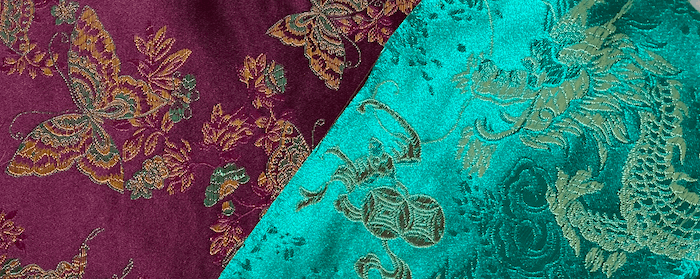
By 1884, crazy quilting had become a phenomenon, transforming scraps of luxurious fabrics into breathtaking works of art that preserved cherished memories.
Women began stitching together fragments of their grandmother's velvet dress, snippets of their father's favourite silk tie, and pieces of lace from their wedding veils, creating quilts that told the stories of their lives.
Manufacturers soon caught on to the craze, offering silk scrap kits, while cigar companies wrapped their products in silk ribbons, and women's magazines published crazy quilt patterns.
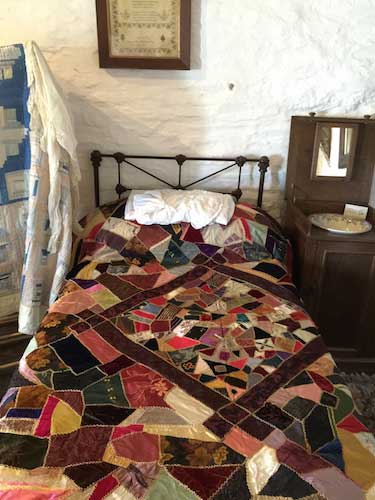
The Joy of Crazy Quilting
The joy of crazy quilting lies in its ability to encourage creativity without the constraints of rules or boundaries.
Every stitch becomes a celebration of individuality and imperfection, allowing your personality to shine through.
To create a visually appealing quilt, you must consider the overall feel or theme and choose fabrics that complement each other in colour and pattern.
The natural sheen of silk, the glossy shine of satin, and the soft, dense pile of velvet add a touch of luxury to the work, while personal embellishments such as nostalgic trinkets, delicate lace trims, elegant embroidery, and flamboyant ribbons make each quilt a unique expression of its creator.
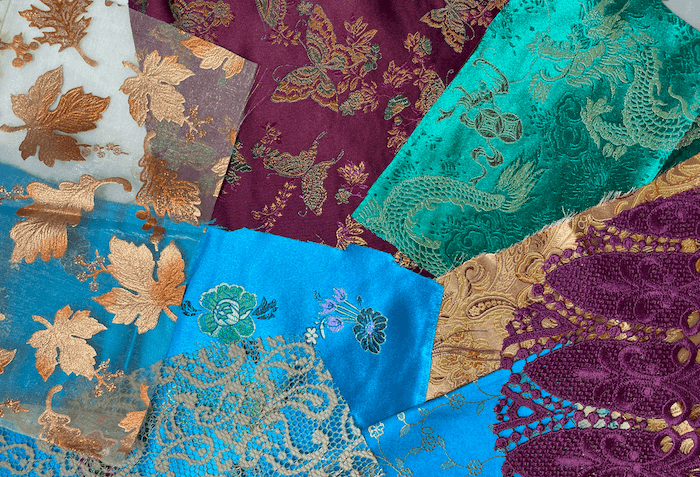
Designing Your Crazy Quilt
How do you design something that is all about spontaneity and letting your creativity flow? Here are some tips to help you get started.
Let go of traditional rules
Crazy quilting is an art form that thrives on breaking the rules. Forget about perfect seams, precise measurements, and uniform shapes. Enjoy the chaos and irregularity that make these quilts so different.
Start with fabric scraps
Gather a collection of fabric scraps in various colours, patterns, and textures. The more diverse your fabric stash, the more interesting your crazy quilt will be. Don't be afraid to mix and match different materials, such as silk, velvet, and even lace or ribbons.
Freeform piecing
Instead of cutting precise shapes, simply start piecing your remnants together in an organic, freeform manner. Sew them together at random angles, creating irregular shapes and curves. Let the fabric guide you.
Incorporate embellishments
Crazy quilting is all about embellishments.
As you piece together your fabric scraps, add embellishments like buttons, beads, ribbons, lace, or even found objects.
These embellishments can help tie the different fabrics together and create visual interest.
Experiment with embroidery
Once you have your fabric pieces sewn together, it's time to add stitching.
You can follow the seam lines of your patches, choose to add a motif or even stitch your initials wherever you desire.
Let your stitches meander and flow freely, adding texture and depth to your creation.
Layer and overlap
Don't be afraid to layer and overlap fabric pieces and stitching on top of one another. This will add to the overall whimsical feel.
Embrace asymmetry
Crazy quilts are all about asymmetry and imbalance.
Avoid creating perfect symmetrical designs or patterns. Instead, let your quilt evolve organically, with each fabric piece and embellishment adding to the overall sense of controlled chaos.
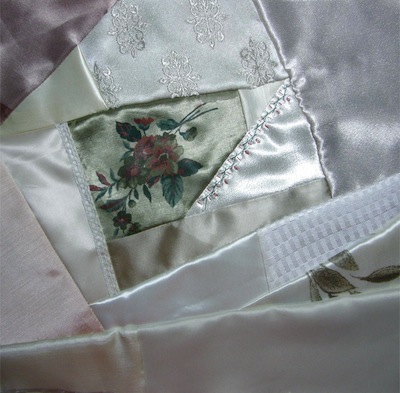
Embroidery: The Language of Crazy Quilting
Crazy quilting embroidery stitches are more than decorative; they tell stories and give quilts character.
By combining fabric scraps and stitches, you create art with a needle and thread.
Different stitches, such as feather, herringbone, French knots, and bullions, add charm, outline shapes, create edges, and add depth.
This results in inviting closer examination and appreciation.
Let's explore!
Feather Stitch and Others
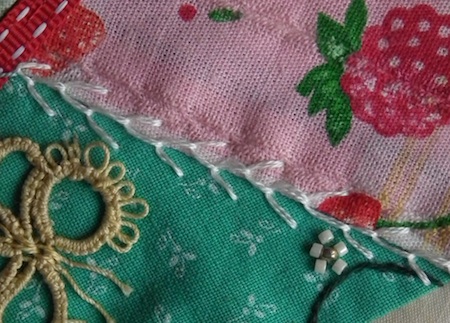
Study any antique crazy quilt and its almost inevitable that you will spot feather stitch. Not surprising really, as it is perfect for following the seam lines between fabric pieces.
Basic feather stitch is easy to work and any imperfections add to the charm and handmade appeal of the quilt.
It lends itself to embellishment, with additional stitches, beads, or sequins all playing a part.
Don't forget that there are many variations giving your plenty of options to get creative and personalise your work.
From the refined briar stitch to the delicate maidenhair stitch, each variation of the feather stitch has its own unique charm and style.
You can choose from single, double, closed, or chained feather stitches to add variety. For a heavier line or gentle curve, try the Spanish knotted feather stitch.
But crazy quilting isn't just about feather stitches.
Other traditional embroidery stitches have withstood the test of time and remain favourites.
Let's explore some of these stitches.
Fly stitch is a versatile hand-embroidery technique, perfect for crafting delicate flower petals, textured leaves, or intricate patterns.
Despite its simplicity, when paired with other stitches, it can yield stunning visual effects.
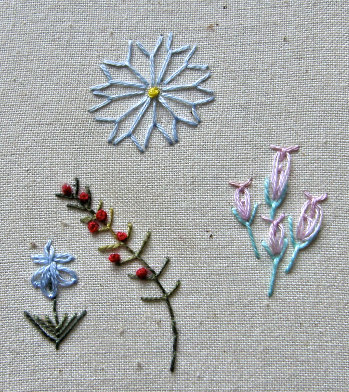
Herringbone stitch, with its elegant zigzag pattern, is another useful technique. It's ideal for filling spaces or creating borders, adding a touch of sophistication to any embroidery project. I've combined it with straight stitches in the photograph.
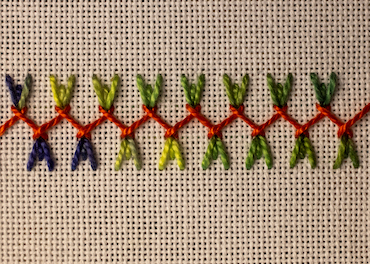
Cretan stitch is another favorite of mine due to its adaptability. It's excellent for creating decorative borders or filling larger areas, and its unique shape adds movement and interest to any design.
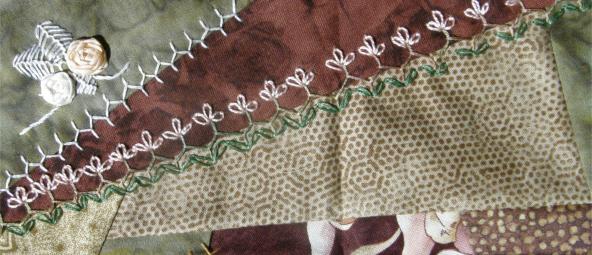
Chevron stitch is perfect for couching ribbons or lace and is often combined with other stitches for stunning seam treatments.
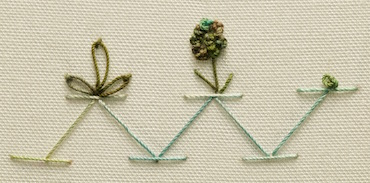
Bullion knots add depth and drama to crazy quilting projects. This stitch creates long, twisted coils that can be used to create intricate motifs.
While it requires practice to master, the result is worth the effort, as you'll find yourself wanting to incorporate it into various designs
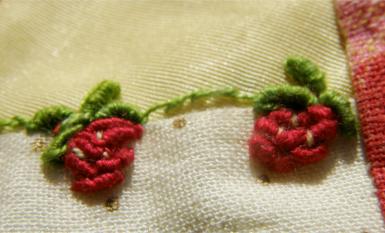
Crazy quilting is all about the adventure of creating something one-of-a-kind with your own hands, pouring your heart and soul into each stitch.
It's about the satisfaction of seeing your vision become a reality and the joy of sharing your creations with others.
Stay connected between projects
If you’d like occasional updates from my embroidery room, including new patterns, gentle tips, and little things I think you might enjoy, you’re warmly invited to join the Stitchin’ Times newsletter.
No pressure. Just a friendly note now and then to keep you inspired.



